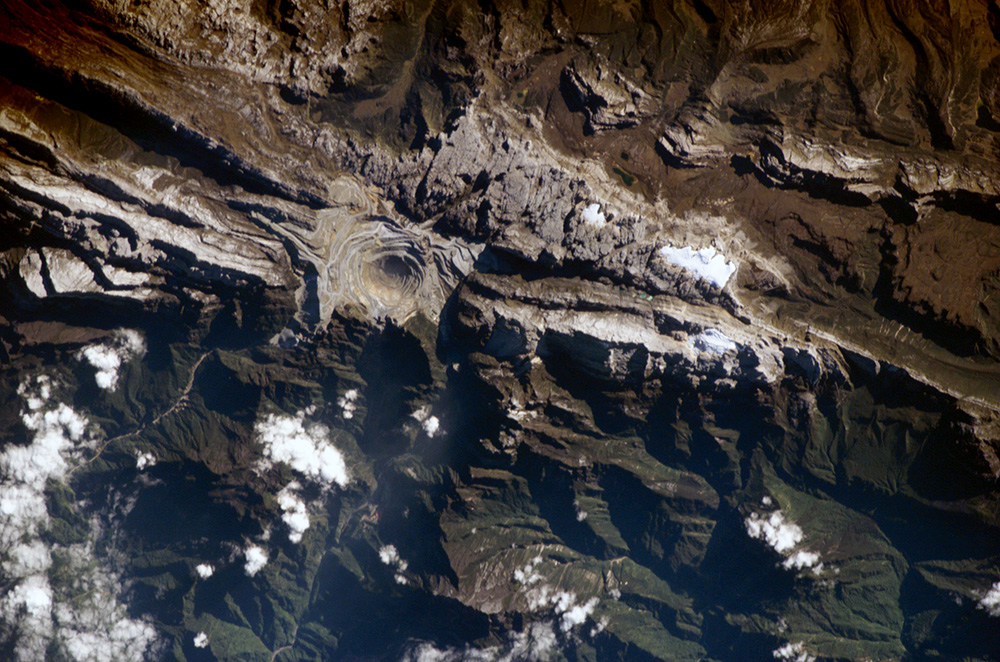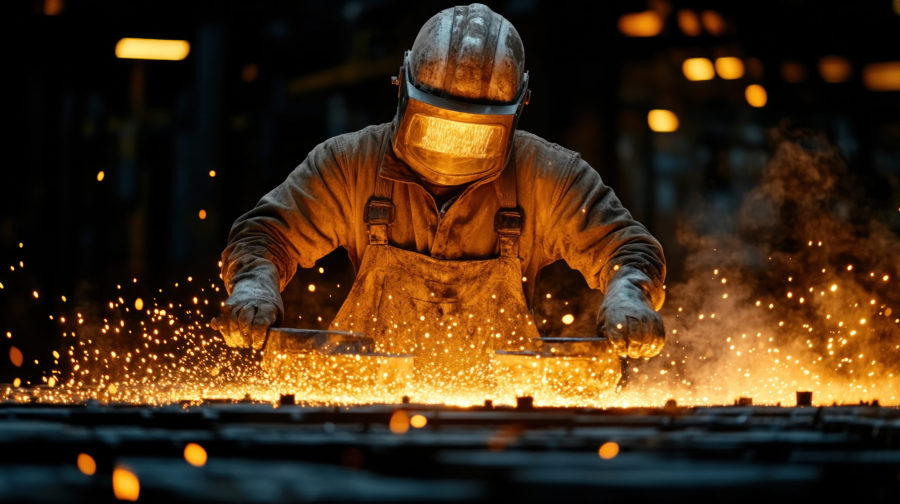Here’s how you value any gold project
The mining industry is a fascinating space – not only for the fact that almost everything around us comes from mining but also because of the possibility of striking gold with penny stocks that have the potential to turn into a multi-million dollar mine-producing company. But just as much as there is the possibility of blue sky upside, risk is around every bend even after the mining company has started production, which is why it is crucial to know how to value a mine instead of blindly investing in them.
Many investors and economic enthusiasts are obsessed with gold, but it is hard to break into understanding how one would go about valuing a mine because of a lot of technical jargon. But here’s something outsiders don’t know – every mining company starts out as a cookie cutter of another. For example, how you value a mine is essentially the same, mining executives bounce around companies such that they are all familiar names, and even corporate presentations follow a certain template. Knowing this already is a huge advantage when learning how to value a mining company. In other words, mining is seemingly a mysterious industry, but once you are equipped with the minimal essential knowledge of how to value a mine, you pretty much know 80% of what you need to know.
We are going over everyone’s favorite: GOLD. Keep reading and you’ll find that it’s pretty simple, and once you learn these step-by-step guide, you might just become addicted to valuing more. Let’s get started.
(Presumably, you already have a company in mind that you want to value, but if you don’t, the best free resource for finding one amongst a sea of mining companies is 24hgold but you have to pay to view more than 3 searches. Another tool that’s free is simply googling “gold mining feasibility study” and limit search results to the last 6 months.)
Here’s what you need:
- Technical Report
- Valuation Model – (Scroll to the bottom to download gold mine valuation model for free.)
- Company Website
1. Technical Report
Mine Status
Every mine that goes into production has a technical report written by geologists and engineers. This report is called “NI 43-101”. They can be found on the company’s website or in the SEDAR database for a Canadian mining company or on SEC EDGAR for a US mining company. The first page of the technical report will tell you the type of report, which basically means the stage of the mine. These stages are:
- PEA (Preliminary Economic Assessment)
- Pre-Feasibility Study
- Feasibility Study
A PEA is a very early stage report that defines the resources but that is pretty much it. The probability of a mine with a PEA eventually going into production is very low (i.e. just because a mine has a PEA, it does not mean it’s sure to become a mine). The next progression after a PEA is a pre-feasibility study, which has a 10%-30% chance of the mine going into production down the road. It defines the resources with more confidence and discusses the possible economics of the mine (i.e. how much capital costs might go into developing the mine, which is determined by the annual production capacity that makes sense for this particular mine, etc.). The next step after a pre-feasibility study is a feasibility study, which is the most advanced stage of the mine before construction and development begins. It is a more detailed report than the pre-feasibility study with a higher certainty of its assumptions being met. Aside from the majority of the report being a technical assessment, it is essentially a detailed business plan.
By the way, each stage takes years. After a PEA is issued, most likely it will take 2-3 years before a pre-feasibility study and then another 1.5-2 years for a feasibility study. Then anywhere from 1year-never for the permitting process. And finally once you have all the ducks in a row, another 2-3 years for construction and development. In other words, it takes anywhere from 6-10 years before a mine starts producing from the time a PEA is issued. (Note that there is a variance to this time frame depending on many factors. Most notably, a smaller mine in an already mining prolific town where it is easy to get permitting may shave off a couple of years or a big, complicated mine in a politically unstable environment or where there are indigenous protests, may take north of 10 years.)
So, let’s say we settle on a mine that has a feasibility study. As an example, we’ll look at Avnel Gold and its Kalana Gold Project.
What to Extract from a Technical Report
As I said before, there is a lot of technical jargon to understand in mining. And a technical report can be hundreds of pages long. But from my many years of valuing mining companies, you just need to extract the necessary info to value a mine. (Of course, the more of a technical expert you are, the more you can understand the viability of the mine, but most of us aren’t going back to school to get a geology or engineering degree, I don’t think.) So, what to extract from a technical report:
- Mine Start Year
A feasibility is usually optimistic in the permitting process, the length of time for construction and development phase and the pre-production phase. So, I would add 1-2 years to the mine start year that the feasibility study lays out. If the company has already made significant plans to develop the mine after the feasibility study has been issued, you can often find in their annual or quarterly reports or press releases when they expect production to start. *Note that before full capacity production, the company tests the processing and optimizes the plant. This phase is pre-production and the very first gold produced is called a “gold pour”. We are looking for the year in which “commercial production” starts.
In the Kalana Mine feasibility study, the anticipated commercial production start year is July 2018.

It is highly unlikely for a mine to start producing on time. So, I am going to tack on 1.5 years and say that full capacity commercial production starts in January 2020.
2. Reserves & Resources
By the time a feasibility study is written on a mine, the resources are reported with a high degree of certainty. These are called Proven & Probable Reserves. Each category of reserves or resources tells you the degree of certainty that the stated minerals are indeed there and mineable. If you’re trying to value a mine that only has a PEA, you may only see Inferred Resources. This is kind of a stick your finger in the air and guess how much mineral might be contained in the ore. Well, maybe a little more certain than that. The general rule-of-thumb in converting each category of stated reserves & resources into mineable minerals is:

What this means is, looking at Avnel Gold’s Kalana Mine example, its feasibility study has proven & probable reserves of 1.96 million ounces (or “oz”):

In my valuation model, I’m going to cap the number of ounces produced by the mine at 90% of 1.96 million ounces or 90% of 21.7 million tonnes which is 19.5Mt. Note the grade of 2.8g/t of gold (“Au”) in the table. We’re going to use this number below.
Note that “Tonnes” is the ore (or the actual raw rock) that is mined and processed, “Grade” is how much gold is contained in the ore, and the “Ounces” is the resulting number of gold in ounces. The formula is very simple. It helps us figure out the production rate (discussed in the next section):

*Note: tonnes, not tons. And Troy ounces, not imperial ounces.
3. Annual Production Run Rate
Under the Economic Analysis section, the feasibility study will lay out the plant throughput. The plant throughput is how much ore (the raw rock) is mined and processed to extract the gold. This is where the “grade” calculation from above is used. In the Kalana Mine feasibility study, the plant throughput rate is 1.5 million tonnes per annum:

Putting together the reserves estimate from above and the annual throughput rate, we model in our valuation 1.5Mtpa per year until we reach a cap of 19.5Mt. That is for 13 years (19.5 / 1.5).
And to convert the 1.5Mt of ore processed each year, using the formula stated above, we multiply it by the grade of 2.8g/t from the reserves table above. That will give us 4.2 million grams. Gold is expressed in troy ounces, so 4.2 million grams is then divided by 31.1035 to result in 135k ounces.
Plopping this into our valuation model with the start year of 2020, this is what it looks like so far:

— At this point, it might be a good idea to scroll to the bottom of this page to download the valuation model for free so you can follow along. —
4. Gold Recovery
Once gold is extracted through the plant at the gold grade, the gold gets further processed to become refined. The Kalana Mine feasibility study states that the Life of Mine (LOM) gold recovery rate is 92.7%, which is extremely optimistic. But for the purpose of this valuation, we will use this number (and because we can always change this assumption later). We simply multiply this to the gold produced to get the refined, recovered gold of 125.2k ounces per year.

5. Operating Costs…
For rest of the article or to download a free gold mine valuation model, click here.
More News
{{ commodity.name }}
{{ post.title }}
{{ post.date }}



Comments